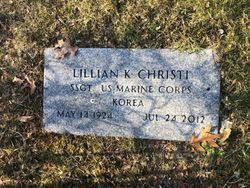This world of research I've 'dabbled' in over the past ~30 years started with my father's family. Ignoring the tall tale that we weren't related to any other Amermans, I started digging in the local historical society, county records and other historical repositories, which eventually landed me a volunteer position on my one day off a week from my summer job. Since then, I can debunk the tall tale and say we are ALL related. No matter how you spell the name, one M or two, we're all related.
The realm of military history 'dabbling' started even earlier; I was still in elementary school and was engrossed in the Civil War. I always had my nose in a book about it, including at times when I could have been screwing off in the senior lounge with my friends during a free period in my senior year instead of reading about Sherman's march across Georgia. I'd been to Gettysburg several times, felt a pull to the battlefield, and have photographed many of the NY monuments. Of course I paid close attention to those that listed towns and counties from my neck of the woods; this includes the 111th New York Volunteer Infantry Regiment monument.
However, these two aspects of my life-long obsession did not collide until a few years ago as I started digging into the many branches of the family tree. Unbeknownst to me, my 3x grandfather was at Gettysburg. So, here we are 158 years later to the day, so let me introduce you to Private George Pickard.
On 1 August 1862, at the ripe age of 44 and with 9 children under the roof, George Pickard of Owasco, New York, enlisted. Private Pickard, like many from Cayuga and Wayne Counties created the 111th New York Volunteer Infantry Regiment. Before the end of the month, the regiment left the state and was bound for the defense of Harper's Ferry.
Harper's Ferry was also another one of those places that I felt pulled to in those early days of learning to be a historian. The 111th was there. The regimental commander reported:
Colonel Jesse Segoine,
111th New York Regiment.
In the end, the regiment surrendered on 15 September 1862. However, the next day, the men were paroled and sent to Annapolis, Maryland, and then to Camp Douglass, in Chicago. There they remained until 23 November when they were exchanged and stayed on to perform guard duty until ordered to Washington, DC and to perform duty in the defenses of the city and at Centreville, VA.
The regiment remained in the area until 25 June 1863 when it was ordered to join the Army of the Potomac in the field and assigned to 3rd Brigade, 3rd Division, 2nd Corps. The regiment then commenced the Gettysburg Campaign.
From the monument we know:
It was on 2 July that Private Pickard met his fate. From the letter that Colonel MacDougall, a former Auburn banker originally from Scotland, wrote his widow stating “that the wound that caused her husband's death was received on the battlefield.” Private Pickard was mortally shot in the head, and was sent to Fort Schuyler, New York where he languished for 20 days until complications from his wound (including meningitis) took his life. Less than a year after enlisting.
Private Pickard was the oldest man from Owasco to join the cause of the Union. He left behind his wife Jane, and nine children--the youngest born just weeks before he enlisted. From Owasco historian, Laurel Auchampaugh (who I worked with when I was volunteering on that one day off a week!) reports that my 3xgrandmother had a terrible time getting her widow's pension:
It appears that my early passion for the Civil War, Gettysburg, Harper's Ferry, and the fact that I'm now living within miles of where he served during the war was in my DNA. The fact that all these various pieces came together 158 years later, or thereabouts, is a little eerie--not in a bad way. 
New York, Civil War Muster Roll Abstracts, 1861-1900 via ancestry.com
So this 2 July, I'll remember Private George Pickard of Owasco, New York, my 3xgrandfather. Thank you, Private Pickard. He gave the last full measure of devotion to uphold the principles of the founding fathers; liberty for all because all men (and women) are created equal.


































